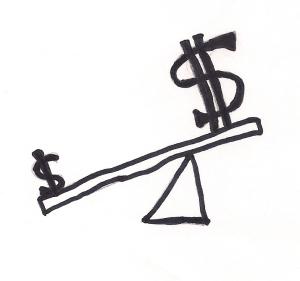
Let’s face it, bad stocks happen to good people. A couple of years ago I discovered a company called The Container Store. It was a relatively new company with just a short history of earnings. Normally I like to buy older companies that have a history, but I thought that I could get in on the ground floor for once.
So I bought a couple of hundred shares. Then I bought a couple of hundred more. Then I bought some shares in an IRA account. I was all in, waiting for the shares to move up as they expanded stores and people realized what a great company they were.
Then they started falling. They fell from about $20 per share where I bought them down to $10 per share. At this point, I decided to double down – to buy more shares at the lower price. The advantage here is that when the stock starts to recover I’m making a gain rather than just making my way back to the level at which I bought the stock. I thought surely this was just a fluke, that it was a good company, and things would recover.
Then it fell down to $5 per share. Then it rose a bit. Then it fell again. Today it sits at about $4.75 per share.
One of the things I did at that point is to take the loss so that I could offset some gains I had on other positions. Because I wanted to keep a position in the stock, I went ahead and purchased additional shares, then waited for about six months, then sold my original shares, locking in the loss. Note that I had to wait at least 30 days after I bought the additional shares or it would have been a wash sale, which would mean I would not have been able to write it off on my taxes.
I bought the additional shares at about $4.50 per share, so I have a small gain on the new shares. Rather than buying more shares and taking the risk of an even bigger loss if the shares fell before the 30-day holdign period was up, I could have also sold the shares I had at a loss and then waited 30 days before purchasing more shares to avoid a wash sale. I decided that it had fallen enough that it probably didn’t have much farther to go. Of course, bad things sometimes happen….
So in The Container Store, I averaged down at $10 per share, and then again at $4.50 per share (at least for a few months). Now that things have risen a little, the worst may be behind me. Of course, I had shares of Pacific Sunware that bounced around between $2 and $6 for a couple of years before they finally declared bankruptcy. They are now almost worthless. I bought about 400 shares at $2 per share, waiting for the stock to recover again, but it never did. I ignored the advice of my broker to take the gain and rode them right down to the floor.
In general, if a position takes a big hit like this, I let the dust settle (the damage has already been done – no reason to rush out and sell). I look at the fundamentals of the company and also the trends in the whole industry.
- If the whole industry is down, I usually hold my position or buy more.
- If just the company I bought into is down, I look to see if something fundamentally has changed or if they just had a misstep. If the latter, I will hold on or maybe buy more. If the former, I sell out.
Of course, Kenny Rodgers said you need to know when to hold ’em, know when to fold them. With individual stock buying it is more trying to be in the big winners before they become big and to ride them all of the way up. Sometimes this means just holding onto some losers along the way, since folding early could make you miss out on something big. I therefore tend to hold on and buy more rather than cash in, Really, it all depends on what the fundamentals are telling me.
Got an investing question? Please send it to [email protected] or leave in a comment.
Follow on Twitter to get news about new articles. @SmallIvy_SI
Disclaimer: This blog is not meant to give financial planning or tax advice. It gives general information on investment strategy, picking stocks, and generally managing money to build wealth. It is not a solicitation to buy or sell stocks or any security. Financial planning advice should be sought from a certified financial planner, which the author is not. Tax advice should be sought from a CPA. All investments involve risk and the reader as urged to consider risks carefully and seek the advice of experts if needed before investing.
